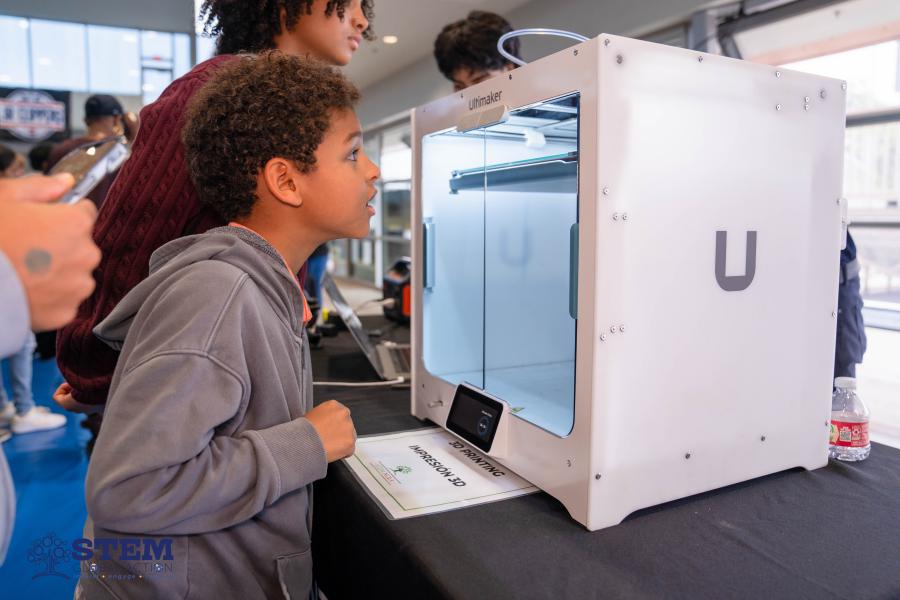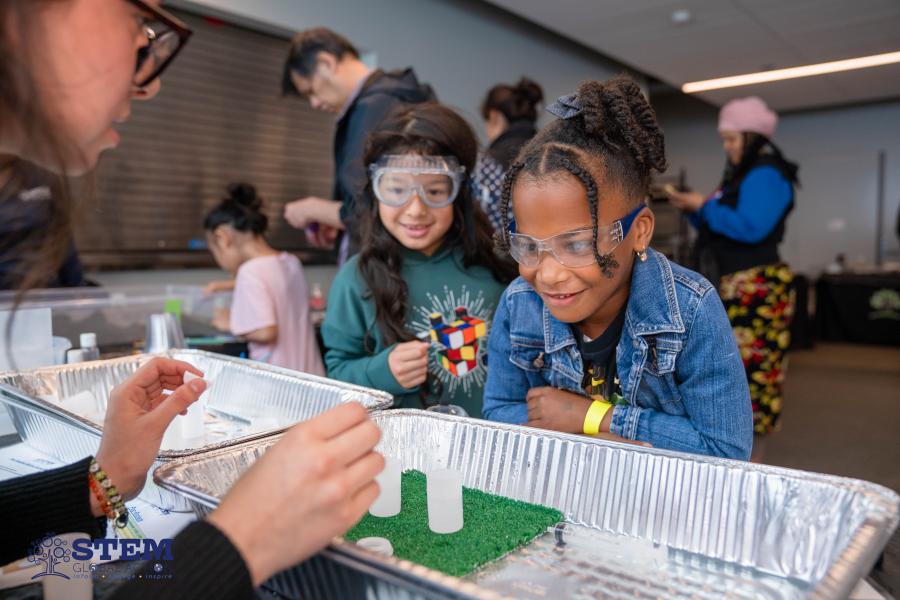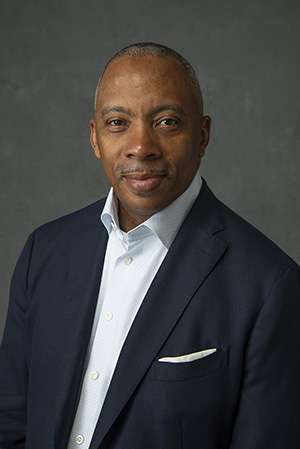June 24, 2024
By Chloe Arrington
Calvin Mackie, alumnus and advisory board member of the George W. Woodruff School of Mechanical Engineering, holds many titles: engineer, professor, entrepreneur, author, philanthropist, husband, and father.
After becoming the first African American to receive tenure in the Tulane University School of Engineering, he faced an abrupt shift in his academic career in 2007 when Tulane disbanded its engineering school due to the financial hardships brought on by Hurricane Katrina.
Mackie's response to the dissolution of Tulane's engineering school was not to seek another faculty role, as most in his position would, but to create a whole new type of learning environment. With his teaching experience and substantial involvement in the New Orleans community, he decided to take education from the traditional classroom setting and bring it directly to the community. In 2013, he founded the non-profit STEM NOLA, a hands-on, community-focused education initiative dedicated to making STEM accessible for all K-12 students.
From an Early Prediction to Life-Long Passion
Born and raised in New Orleans, Mackie often built and assembled creations with materials from his father's roofing business when he would accompany him on job sites. When he was 9, Mackie's uncle watched him assemble a toy car kit he had gifted him and proclaimed, "He's going to be an engineer!"
"I had no idea what an engineer was. I had never met one. I couldn't even spell it!" said Mackie. "But I loved to build and make things, so from then on, when anyone asked me what I wanted to be, I said engineer."
Mackie received a basketball scholarship in high school, but an extensive shoulder injury his senior year prevented him from playing further. Though a student-athlete would usually be devastated by such a situation, Mackie experienced his first complete STEM immersion by attending an 8-week-long summer science program at Morehouse College in Atlanta because of this injury.
"That was the place for me," said Mackie of the experience. Still determined to be an engineer, Mackie learned that while Morehouse did not have an engineering program, a dual degree option was available, starting at Morehouse and transferring to Georgia Tech.
This program was ideal as his grades and SAT scores were not strong enough to get him directly into Georgia Tech. Despite not being a star student on paper, his performance in the summer program earned him a scholarship to Morehouse. Though he was placed in remedial reading courses, Mackie excelled in mathematics, successfully completed his studies at Morehouse, and transferred to Georgia Tech.
"A whole world opened up to me when I joined Georgia Tech," said Mackie. He admits he chose mechanical engineering because the word mechanical sounded like the best place to continue his passion for building and exploring how things worked. After earning his B.S. in mechanical engineering in 1990, he remained at the Woodruff School through his postgraduate studies, receiving his M.S. and Ph.D. in 1992 and 1996, respectively.

Leaving the Classroom to Create a New Kind of Learning
Mackie's various mentors convinced him to follow the traditional academic route, which led him to a faculty position at Tulane University. There, he was granted tenure in 2003, approximately two years before Hurricane Katrina. When Tulane eliminated its engineering school, Mackie was offered positions at other universities, but he said he took this upheaval as a sign from God to follow a new path.
"My hope was no longer in the technical development but in the human capital development. I wanted to be what my mentors were to me and focus on developing people," said Mackie. "Instead of a university, I wanted to build what I call a communiveristy." He hoped this people-first model would take education beyond the classroom and put it directly into the community.
The idea was further inspired by Mackie's son and his experience in his science class. After proclaiming to his father that he did not like science because his teacher "only wrote on the whiteboard," Mackie began substituting his lessons with experiments and at-home science kits in their garage.
His son asked Mackie to include his friends and classmates saying, "My friends need this, too." Before long, Mackie was hosting groups of 20 or more children at each of these garage lessons.
When Mackie saw his son's love of science return and the academic advantage these at-home lessons gave the children, he knew that his mission was to make this accessible to children in all communities and to help encourage their love and abilities in STEM.
In 2013, STEM NOLA was founded to expose, inspire, and engage communities in learning about STEM and STEM opportunities. In December of that year, STEM NOLA announced its first event would take place in New Orleans, and they expected approximately 100 participants to attend. The actual turnout was closer to 500, with local and state representatives also in attendance.
For the last 10 years, on the second Saturday of every month, STEM NOLA has hosted an event somewhere in New Orleans, and to date, over 125,000 children have participated. Students are exposed to all aspects of STEM, from engineering and physics, where they can build cars and model bridges, to biology, where they can dissect animal hearts. Students are also educated on the science of their city, wetlands, and flooding, learning why Hurricane Katrina was such a historic moment for New Orleans, even though it occurred before these students were born.
"We created living, breathing classrooms outside of buildings and in the spaces where people live and work," said Mackie. "I've built pathways to get the engineering and the technology to the people, rather than people coming to it."
STEM NOLA is also dedicated to introducing STEM to those typically overlooked in these fields and breaking social and economic barriers. "It's not that kids in rural and urban areas don't like STEM; they're just not exposed to it. They haven't developed the mindset to see themselves as a great scientist because they haven't met one. The exposure needs to become second nature, the same way we put a football in a child's hand at age 4, we need to put STEM in their hands that early."

Children participating in a STEM Fest in June. Image courtesy of STEM NOLA.

Children participating in a STEM Fest in June. Image courtesy of STEM NOLA.
Beyond the Big Easy
With STEM NOLA now a fixture in New Orleans, Mackie's wish for all children to have the chance to experience this communiversity learning is coming to fruition with the expansion into other cities in Louisiana and other states. STEM Mobile is operating in Alabama, and in the last month, pop-up STEM events have happened in Atlanta in association with Georgia Tech and in Los Angeles. "We built a model that other cities can adapt and give their kids," said Mackie.
STEM NOLA is also building a dedicated STEM Innovation Hub in New Orleans to increase the program's scale and quality. This 40,000-square-foot space will include laboratories and classrooms and serve as the organization's new headquarters. With the program growing each year, Mackie's goal has changed in scale, but his vision remains the same as in 2013, giving children the opportunity to learn and love STEM.

